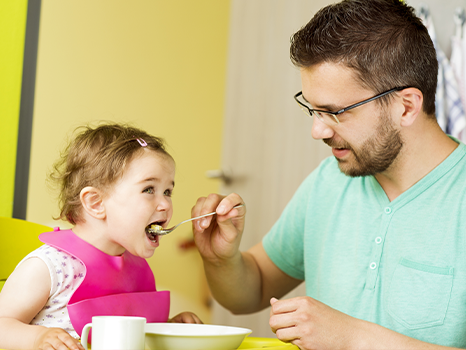
Changes to daily routines can be difficult for us all, especially for autistic children. Routines create predictability and help us to feel in control about what is happening now, next and into the future. Autistic children and/or children with learning and communication difficulties may need more support to understand what is happening during their routine and to anticipate what is going to happen next.
Many children are visual learners and benefit from visual supports to structure different parts of their day. As adults we use visuals to help us structure our day and follow the steps within a task. For example, we might use a diary to help us know what we have on each day and pictures to follow the steps in a recipe. These visuals are a more complex form of a visual schedule.
Why we use visuals with our children
- It can provide more structure and predictability to the day. This increased predictability can reduce anxiety and support a child to feel calmer and more regulated.
- It can help with transitioning from one activity from another.
- It can help with unexpected changes in the routine.
- It can support a child to remain on task or motivate them to complete a task by reminding them of a preferred task that is coming up next.
- It can help to make abstract concepts like ‘first’, ‘later’ or ‘next’, more concrete.
- It can promote independence by breaking a task into smaller steps.
(National Autistic Society, 2019 ).
Visuals are permanent, while words are fleeting. Visual supports give our children more time to process what we say by reinforcing our verbal language, and reminding us to speak slowly and use simple language
Using visual support with SCERTS Communication Stages
It important to think about the kind of visuals that work best for your child. For example, pictures/symbols that are printed, drawings on paper or a whiteboard or objects. Just like us, our children can benefit from visual supports, but the types of visual supports may change as they progress through the communication stages. We can think about developmentally appropriate visual supports using the Social, Language and Conversation partner SCERTS stages (Prizant et al, 2015; Noens et al, 2006).
|
Using visuals with a Social Partner (someone who communicates with gestures, behaviour and vocalisations (e.g. noises, sounds) Useful visual supports at this stage could include:
|
|
|
Using visuals with a Language Partner (someone who communicates with single words, short phrases, symbols, pictures, and signs) Useful visual supports at this stage could include:
|
If your child responds to pictures and photos, they may benefit from photos/symbols representing their daily activities. This could include:
|
|
Using visuals with a Conversation Partner (someone who communicates with more creative phrases and sentences) Useful visual supports at this stage could include:
|
If your child can understand symbols/drawings and/or read, they may benefit from a:
|
Tips for using visuals at home
- Visuals are a “proactive” not “reactive", so it is important that they are used consistently with our children, and not just as a response to a difficult situation.
- When your child is upset and coping with changes to their routine, they may not be able to process what you are telling them. It might help to use language that is simpler than you would usually use. Sometimes a child at the Conversation Partner stage may benefit from visual supports that a Language or Social Partner uses. Each child is unique.
- If your child’s visual schedule is made up of pictures/photos it can be useful to keep a couple of pictures blank for different activities, or when there has been a change. You can write or draw what the new activity is. For example, if usually you go for a walk to the park, but it is raining, you may need to change the schedule. This is a time when you could use the ‘change’ card
Thinking about your child’s communication stage what visuals do you think will work best for them? What places does your child visit and what activities do they engage in? This could give you ideas about what visuals you may want to consider. Alternatively think about a specific activity and the steps required in that activity (e.g., to wash hands, turn on tap, wash hands, turn off tap, dry hands). These could also be ideas for visuals to use.
References
Prizant, B.M., Wetherby, A.M., Rubin, E., Laurent, A.C., and Rydell, P.J. (2015). The SCERTS Model: A Comprehensive Educational Approach for Children with Autism Spectrum Disorders (Volume II: Program Planning and Intervention). Brooks Publishing Co.
National Autistic Society. (2019). Visual Supports. https://www.autism.org.uk/about/strategies/visual-supports.aspx
Noens, I., Van Berckelaer‐Onnes, I., Verpoorten, R., Van Duijn, G. (2006). The ComFor: an instrument for the indication of augmentative communication in people with autism and intellectual disability. Journal of Intellectual Disability Research, 50 (9):621-632.
